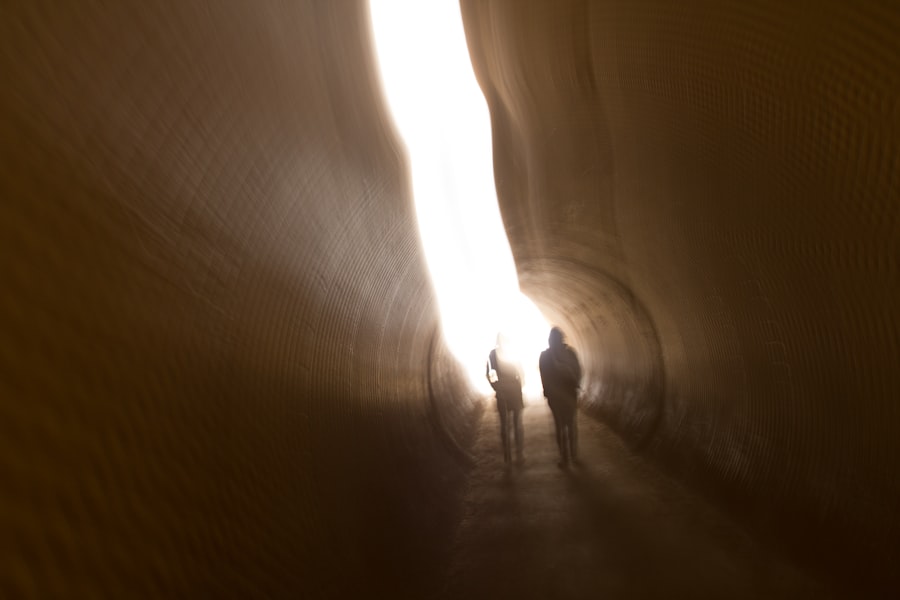Navigating the Drake Passage is a pivotal experience for those embarking on Alaskan cruises. This stretch of water, which lies between the southern tip of South America and Antarctica, serves as a gateway to some of the most breathtaking landscapes and unique wildlife on the planet. For many travelers, crossing the Drake Passage is not merely a logistical necessity; it is an adventure in itself, filled with the promise of discovery and awe.
The passage is often regarded as a rite of passage for those seeking to explore the remote and pristine regions of the Southern Hemisphere. Moreover, the significance of the Drake Passage extends beyond its geographical location. It represents a connection between two worlds—the vibrant ecosystems of the Antarctic and the rich cultural heritage of South America.
For cruise passengers, navigating this passage offers an opportunity to witness the raw power of nature, as well as the delicate balance that sustains life in these extreme environments. The experience can be transformative, leaving travelers with a deeper appreciation for the planet’s natural wonders and the importance of preserving them.
Key Takeaways
- Navigating the Drake Passage is a crucial part of Alaskan cruises, offering a unique and unforgettable experience.
- The Drake Passage is a significant and challenging stretch of water that connects the Atlantic and Pacific Oceans.
- Proper preparation is essential for navigating the Drake Passage, including understanding the weather and climate considerations.
- Wildlife spotting opportunities in the Drake Passage are abundant, offering the chance to see a variety of marine life.
- Safety measures and precautions are crucial for crossing the Drake Passage, given its unpredictable nature.
Understanding the Geography and Significance of the Drake Passage
The Drake Passage is a body of water that spans approximately 600 miles, connecting the Atlantic and Pacific Oceans. It is named after Sir Francis Drake, an English explorer who was one of the first Europeans to navigate these treacherous waters in the late 16th century. The passage is characterized by its turbulent seas and unpredictable weather patterns, making it both a challenging and exhilarating route for vessels.
Its geographical significance lies not only in its role as a maritime corridor but also in its ecological importance, as it serves as a habitat for diverse marine life. The waters of the Drake Passage are rich in nutrients, thanks to the mixing of cold Antarctic waters with warmer currents from the north.
The passage is also a critical migratory route for numerous seabirds and marine mammals, making it an essential area for biodiversity. Understanding this geography allows travelers to appreciate the intricate relationships between ocean currents, climate, and wildlife that define this remarkable region.
Preparing for the Challenges of Navigating the Drake Passage

Travelers embarking on an Alaskan cruise that includes a crossing of the Drake Passage must prepare for a range of challenges. The passage is notorious for its rough seas, which can lead to significant motion on board. Passengers are advised to pack appropriately, bringing along seasickness remedies and comfortable clothing that can accommodate fluctuating temperatures.
Being mentally prepared for potential discomfort can enhance the overall experience, allowing travelers to focus on the beauty surrounding them rather than any temporary unease. In addition to physical preparation, understanding the schedule and itinerary is crucial. The timing of the crossing can vary based on weather conditions, and flexibility is key.
Cruise operators often provide updates and guidance to help passengers navigate these uncertainties. Embracing the unpredictability of the Drake Passage can lead to unexpected moments of wonder, whether it be spotting a pod of whales or witnessing a stunning sunset over turbulent waters.
Tips for Making the Most of the Drake Passage Experience
| Tip | Description |
|---|---|
| Choose the right time of year | Consider traveling during the austral summer (November to March) for calmer seas and better wildlife sightings. |
| Pack motion sickness remedies | Be prepared for rough seas by bringing motion sickness medication or other remedies. |
| Stay hydrated | Drink plenty of water to stay hydrated in the dry, windy conditions of the Drake Passage. |
| Participate in onboard activities | Take advantage of lectures, wildlife spotting, and other activities offered on the ship to enhance your experience. |
| Keep an eye out for wildlife | Stay on deck and watch for whales, dolphins, and seabirds that are often spotted during the crossing. |
To fully appreciate the experience of navigating the Drake Passage, travelers should take advantage of onboard activities and educational opportunities.
Engaging with these resources can deepen one’s understanding and appreciation of the environment being traversed.
Additionally, passengers should make time to explore the ship’s amenities and connect with fellow travelers. Sharing stories and experiences can enhance camaraderie among passengers, creating lasting memories that extend beyond the journey itself. Whether it’s enjoying a meal together or participating in group excursions, these interactions can enrich the overall experience of crossing the Drake Passage.
Wildlife Spotting Opportunities in the Drake Passage
One of the most thrilling aspects of navigating the Drake Passage is the opportunity for wildlife spotting. The waters are teeming with life, offering glimpses of various species that call this region home. Passengers may encounter majestic albatrosses gliding effortlessly above the waves or playful seals basking on ice floes.
The chance to see whales—such as humpbacks, orcas, and minke whales—adds an exhilarating element to the journey. For avid birdwatchers and nature enthusiasts, having binoculars on hand can enhance wildlife viewing experiences significantly. Many cruise operators provide guided excursions focused on wildlife observation, allowing passengers to learn more about each species encountered.
These moments create unforgettable connections with nature, fostering a sense of wonder and respect for the delicate ecosystems that thrive in this remote part of the world.
Weather and Climate Considerations for Navigating the Drake Passage

The weather conditions in the Drake Passage can be highly variable, which is why understanding climate patterns is essential for travelers. The region is known for its strong winds and sudden storms, which can create challenging sailing conditions. Passengers should be prepared for a range of weather scenarios, from sunny skies to heavy rain and strong gusts.
Dressing in layers is advisable to accommodate changing temperatures throughout the day. Cruise operators closely monitor weather forecasts to ensure safe navigation through these waters. Travelers should remain flexible with their plans, as itineraries may shift based on prevailing conditions.
Embracing this unpredictability can lead to unique experiences—such as witnessing dramatic storm clouds rolling in or enjoying calm seas under a clear sky—making each crossing distinct.
Safety Measures and Precautions for Crossing the Drake Passage
Safety is paramount when navigating the Drake Passage, given its reputation for rough seas and unpredictable weather patterns. Cruise lines implement rigorous safety protocols to ensure passenger well-being during crossings. This includes conducting safety drills before departure and providing clear instructions on what to do in case of emergencies.
Passengers are encouraged to familiarize themselves with safety equipment on board, such as life jackets and emergency exits. Staying informed about weather updates and following crew instructions can further enhance safety during this journey. By prioritizing safety measures, travelers can focus on enjoying their adventure while feeling secure in their surroundings.
Historical and Cultural Significance of the Drake Passage
The historical significance of the Drake Passage cannot be overstated. It has long been a vital route for explorers, scientists, and adventurers seeking to uncover the mysteries of Antarctica and beyond. Sir Francis Drake’s expeditions paved the way for future exploration, shaping our understanding of global navigation and maritime history.
Culturally, the passage has been a source of inspiration for countless artists, writers, and filmmakers who have sought to capture its beauty and mystique. The stories woven around this body of water reflect humanity’s enduring fascination with exploration and discovery. For travelers crossing this historic route today, there is an opportunity to connect with this rich legacy while forging their own stories amidst its waves.
Alternative Routes and Options for Navigating the Drake Passage
While navigating the Drake Passage is often considered a quintessential part of Alaskan cruises heading toward Antarctica, there are alternative routes available for those seeking different experiences. Some cruise lines offer itineraries that bypass this passage altogether by taking longer routes around South America or utilizing air travel to reach destinations directly. These alternative options may appeal to travelers who prefer smoother sailing or wish to explore other regions along their journey.
However, those who choose to navigate through the Drake Passage often find that it adds an element of adventure that cannot be replicated elsewhere. Weighing these options allows travelers to tailor their experiences according to their preferences.
The Unique Beauty and Majesty of the Drake Passage
The beauty of the Drake Passage lies in its raw, untamed nature—a stark contrast to more commercialized travel routes. The vast expanse of ocean stretches endlessly before travelers, punctuated by dramatic waves and stunning vistas that evoke a sense of wonder. Icebergs floating serenely amidst turbulent waters create breathtaking scenes that captivate all who witness them.
As passengers navigate this passage, they are treated to panoramic views that showcase both rugged coastlines and expansive skies. The interplay between light and water creates ever-changing landscapes that inspire awe at every turn. This unique beauty serves as a reminder of nature’s power and fragility, leaving an indelible mark on those fortunate enough to experience it firsthand.
The Unforgettable Memories and Experiences of Navigating the Drake Passage
Ultimately, navigating the Drake Passage becomes more than just a physical journey; it transforms into an emotional experience filled with unforgettable memories. From witnessing breathtaking sunrises over choppy waters to sharing laughter with fellow travelers during moments of camaraderie, each crossing leaves an imprint on one’s heart. The stories shared among passengers often become cherished tales that are recounted long after returning home—stories filled with adventure, discovery, and connection to nature’s wonders.
For many travelers, crossing this iconic passage becomes a defining moment in their lives—a testament to their spirit of adventure and love for exploration that will resonate for years to come. In conclusion, navigating the Drake Passage on Alaskan cruises offers an unparalleled opportunity for adventure seekers and nature lovers alike. From understanding its geographical significance to preparing for its challenges, every aspect contributes to an enriching experience that fosters appreciation for our planet’s beauty and diversity.
As travelers embark on this journey through one of Earth’s most remarkable waterways, they carry with them not only memories but also a deeper connection to nature’s majesty.
If you’re considering an Alaskan cruise and wondering whether you’ll traverse the Drake Passage, it’s important to note that this infamous stretch of water is actually located between South America and Antarctica, not along the Alaskan cruise routes. For those interested in learning more about the unique geographical features and challenges of navigating different waters, you might find this related article on MyGeoQuest insightful. It provides a broader understanding of various maritime routes and their characteristics. You can read more about it by visiting this page.
WATCH NOW! Drake Passage: Earth’s Deadliest Waters Revealed
FAQs
What is the Drake Passage?
The Drake Passage is the body of water between the southern tip of South America and the South Shetland Islands of Antarctica. It is known for its rough seas and challenging sailing conditions.
Do Alaskan cruises go through the Drake Passage?
No, Alaskan cruises do not go through the Drake Passage. The Drake Passage is located in the southern hemisphere, while Alaska is in the northern hemisphere. Alaskan cruises typically sail through the Inside Passage, a protected waterway along the coast of British Columbia and Alaska.
What is the route for an Alaskan cruise?
An Alaskan cruise typically follows a route through the Inside Passage, visiting ports such as Ketchikan, Juneau, Skagway, and Glacier Bay. The cruise may also include stops in other Alaskan towns and scenic areas.
Are there any cruises that go through the Drake Passage?
Yes, there are cruises that specifically navigate through the Drake Passage to reach Antarctica. These cruises are often expedition-style voyages that offer passengers the opportunity to explore the remote and pristine landscapes of the Antarctic Peninsula.
